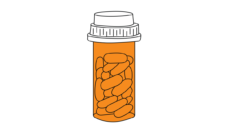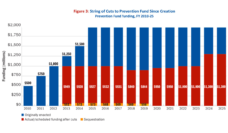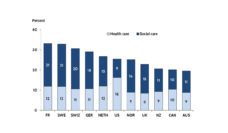People with severe mental illnesses, such as schizophrenia, bipolar disorder, and depression, experience high rates of cardiovascular disease, respiratory problems, and other chronic health conditions. They tend to smoke cigarettes and spend more of their waking hours inactive, placing them at risk for experiencing these medical problems.
Despite the overlap between severe mental illness and chronic health conditions, limited research has examined the cost of treating people with both mental and physical health conditions. Jose Figueroa and his team wanted to know how much the Medicare system spends on all medical conditions for people with serious mental illness. They calculated the average cost of different types of insurance claims from over 4.35 million Medicare beneficiaries and then categorized individual claims by whether the visit was primarily devoted to mental or physical health diagnoses.
The graphic above shows “risk-adjusted mean spending” for treating different severities of mental illnesses, which is what the cost would be if patients were similar in age, gender, and other characteristics. Figueroa and his team found that Medicare spends $13,072 on people without any known mental health disorders, but $19,676 for those with severe mental illness.
Given higher overall medical spending for this group, the researchers speculate that the medical system in the US may not attend to the medical needs of people with serious mental illness before medical conditions become advanced and costs multiply. They highlight 2013 data suggesting that $52 billion dollars annually in health care spending could be saved through integrating primary and mental health care services.
Databyte via Figueroa JF, Phelan J, Orav EJ, Patel V, Jha AK. Association of Mental Health Disorders With Health Care Spending in the Medicare Population. JAMA Netw Open. 2020;3(3):e201210.














